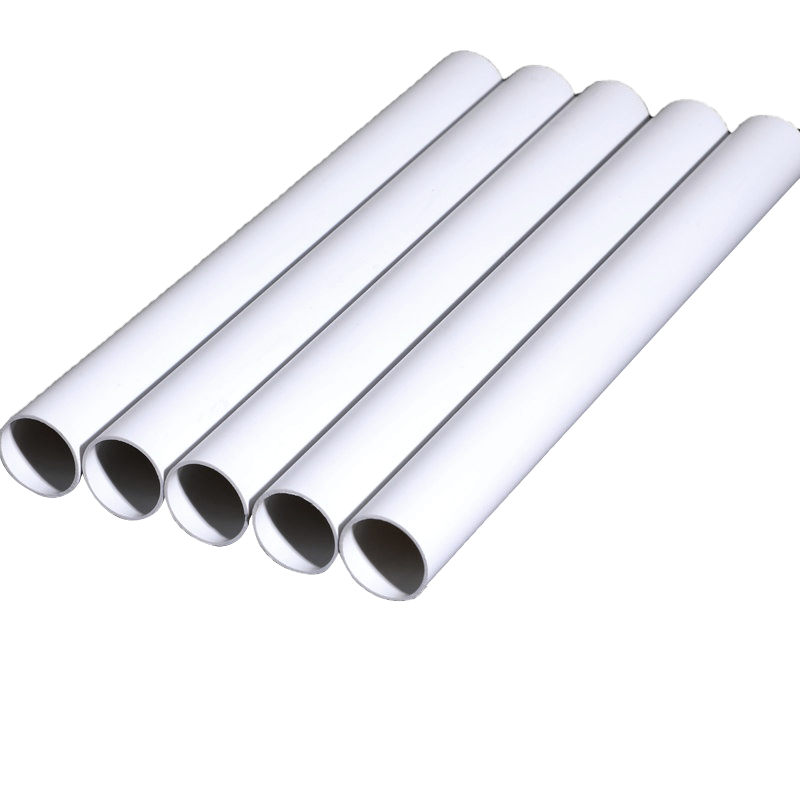Search by posts
Product category
Industry News
 By Admin
By Admin
Can PVC Profiles withstand high temperatures?
PVC (Polyvinyl Chloride) profiles are widely used in construction, furniture, window frames, and decorative applications due to their durability, affordability, and versatility. However, when considering materials for environments exposed to heat, the ability to withstand high temperatures becomes a crucial factor. This article explores how PVC profiles respond to heat, their limitations, and practical considerations for their use in temperature-sensitive applications.
1. Basic Thermal Properties of PVC Profiles
PVC is a thermoplastic polymer, meaning it softens when heated and hardens upon cooling. Standard PVC has a glass transition temperature (Tg) around 80°C (176°F) and a melting temperature above 160°C (320°F). This indicates that PVC can tolerate moderate heat, but excessive temperatures can cause deformation, warping, or discoloration. In practical terms, PVC profiles are suitable for indoor and outdoor applications where temperatures remain within normal environmental ranges, but they are not ideal for areas exposed to extreme or direct heat sources.
2. Factors Affecting Heat Resistance
Several factors influence the heat resistance of PVC profiles:
Additives and Stabilizers: Manufacturers often incorporate heat stabilizers, UV inhibitors, or fillers to improve PVC’s thermal performance. Profiles with these additives can endure slightly higher temperatures without losing structural integrity.
Color and Thickness: Dark-colored PVC absorbs more heat and may soften faster under direct sunlight, whereas thicker profiles can resist warping longer than thinner ones.
Environmental Conditions: Continuous exposure to high sunlight, enclosed spaces with poor ventilation, or proximity to heat-emitting equipment can accelerate thermal deformation.
3. Maximum Safe Temperatures
For standard PVC profiles used in construction and furniture:
Short-term exposure to temperatures up to 60–70°C (140–158°F) is generally safe.
Long-term exposure above 50°C (122°F) can gradually reduce mechanical strength.
Continuous direct exposure to temperatures above 70°C (158°F) is not recommended, as the profiles may begin to soften and deform.
For applications requiring higher heat resistance, uPVC (unplasticized PVC) or PVC compounds with specific stabilizers may provide slightly improved performance, but they still have limitations compared to metals or high-temperature plastics.
4. Common Problems Under High Temperatures
If PVC profiles are exposed to excessive heat, several issues can occur:
Warping or Bending: The softened material can lose shape, causing misalignment in windows, doors, or decorative panels.
Discoloration: Heat can cause color fading or yellowing, particularly for profiles exposed to sunlight over long periods.
Loss of Mechanical Strength: High temperatures reduce the rigidity and impact resistance of PVC, making it more prone to damage.
Joint and Seal Failure: In construction applications, thermal expansion can cause joints to loosen or seals to fail, especially if the profiles are not designed with temperature fluctuations in mind.

5. Practical Tips for Using PVC Profiles in Hot Environments
To ensure PVC profiles perform well under heat, consider the following measures:
Choose profiles with UV and heat-resistant additives if they will be used outdoors.
Avoid installing PVC profiles near heat sources such as ovens, radiators, or machinery.
For dark-colored PVC profiles, ensure adequate ventilation or shade to prevent excessive heat absorption.
Use thicker profiles or structural reinforcements in areas exposed to sunlight to reduce warping risk.
Regularly inspect profiles for signs of heat-related damage, especially in hot climates.
6. Alternatives for High-Temperature Applications
If the environment involves temperatures exceeding PVC’s safe limits, alternative materials may be more suitable:
Aluminum or Steel Profiles: Metals can withstand higher temperatures without deformation and are ideal for structural or high-heat applications.
High-Temperature Plastics: Materials such as polycarbonate, ABS, or fiberglass-reinforced plastics offer better heat resistance than standard PVC.
Composite Profiles: Combining PVC with wood, aluminum, or other materials can improve thermal stability while retaining aesthetic and functional benefits.
PVC profiles can withstand moderate temperatures but have clear limitations when exposed to heat above 50–70°C (122–158°F) over prolonged periods. While additives and proper design can enhance heat resistance, PVC remains unsuitable for extreme-temperature applications. For hot climates, direct sunlight exposure, or proximity to heat sources, careful material selection and protective measures are essential. By understanding these thermal limitations, users can ensure the longevity, structural integrity, and appearance of PVC profiles in a variety of applications.
Recommended products
-
2023 New Cheap Plastic Pipe Multiple Colors And Sizes Custom Hand Waving Flagpole
-
Wholesale Custom Pvc Material Indoor Desktop Flagpole Hand Waving Flagpole
-
Customizable Size Custom Logo Plastics Hand Waving Flagpole Big Pvc Flagpole
-
Plastics Hand Waving Flagpole Factory Direct Custom Wholesale PVC Flagpole Parts Pipe
-
Custom Easy Install Safety Flagpole Pvc China Factory Hand Waving Flagpole
-
New Popular Product Transparent Pvc Flagpole Custom Size Hand Waving Flagpole
-
2023 High Quality Hand Waving Flagpole Big Or Small Flagpole Size Custom
-
Fast Delivery Promotion Factory Wholesale Flagpole Pvc Pipe Hand Waving Flagpole
-
2023 Personalized Custom Desk Hand Waving Flagpole Outdoor White Flagpole
-
Wholesale 2023 Hot Sale Used Flagpole Weight Custom Pvc Hand Waving Flagpole
-
Wholesale Products Cheap High Quality Hand Waving Flagpole Newest Sections Flagpole
-
Wholesale Cheap High-Quality Hot Sale Flagpole Cylindrical Hand Waving Flagpole

 +86-0573-88528475
+86-0573-88528475 English
English русский
русский












